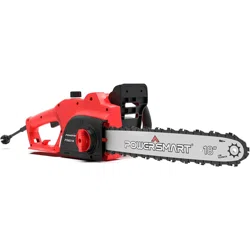Loading ...
Loading ...
Loading ...

16
To fell a tree
WARNING: A tree is likely to roll or slide downhill after it is
felled.
Before commencing to cut down a tree,you must be clear where you want
it to fall and be sure that there is nothing in the way.such as power lines
or
a building that could be damaged when the tree falls. NO person or animal
must be within 2 1/2 tree lengths of the base of the tree concerned.
You should clear two escape routes. Each opening put at an angle
of about 45 in the direction opposite to that in which you plan
that
the tree should fall. These escape routes must be clear and free
of
obstruction (See fig.11).
First, make the notch 1/3 the diameter of the tree perpendicular
to
the direction of fall. Make the lower horizontal notching undercut
first (1). This will help to avoid pinching of either the saw chain
or the guide bar when the second cut (2) is being made (See
fig.12).
Second, make the felling back cut at least 2 in (50 mm) higher
than the horizontal notching undercut. Keep the felling back cut
parallel to the horizontal notching undercut (See fig.13).
Make the felling back cut so enough wood is left to act as a hinge.
The hinge wood keeps the tree from twisting and falling in the
wrong direction. Do not cut through the hinge.
As the felling cut gets close to the hinge, the tree should begin to
fall.
If there is any chance that the tree may not fall in the desired direction or it may rock back and bind
the saw chain, stop cutting before the felling back cut is complete and use wedges of wood, plastic or
aluminum to open the cut and drop the tree along the desired line of fall.
When the tree begins to fall, remove the chain saw from the cut, stop the motor, put the chain saw
down, then use the retreat path planned.
Be alert for overhead limbs falling and watch footing.
Fig.10
Fig.11
Fig.12
Fig.13
Loading ...
Loading ...
Loading ...
